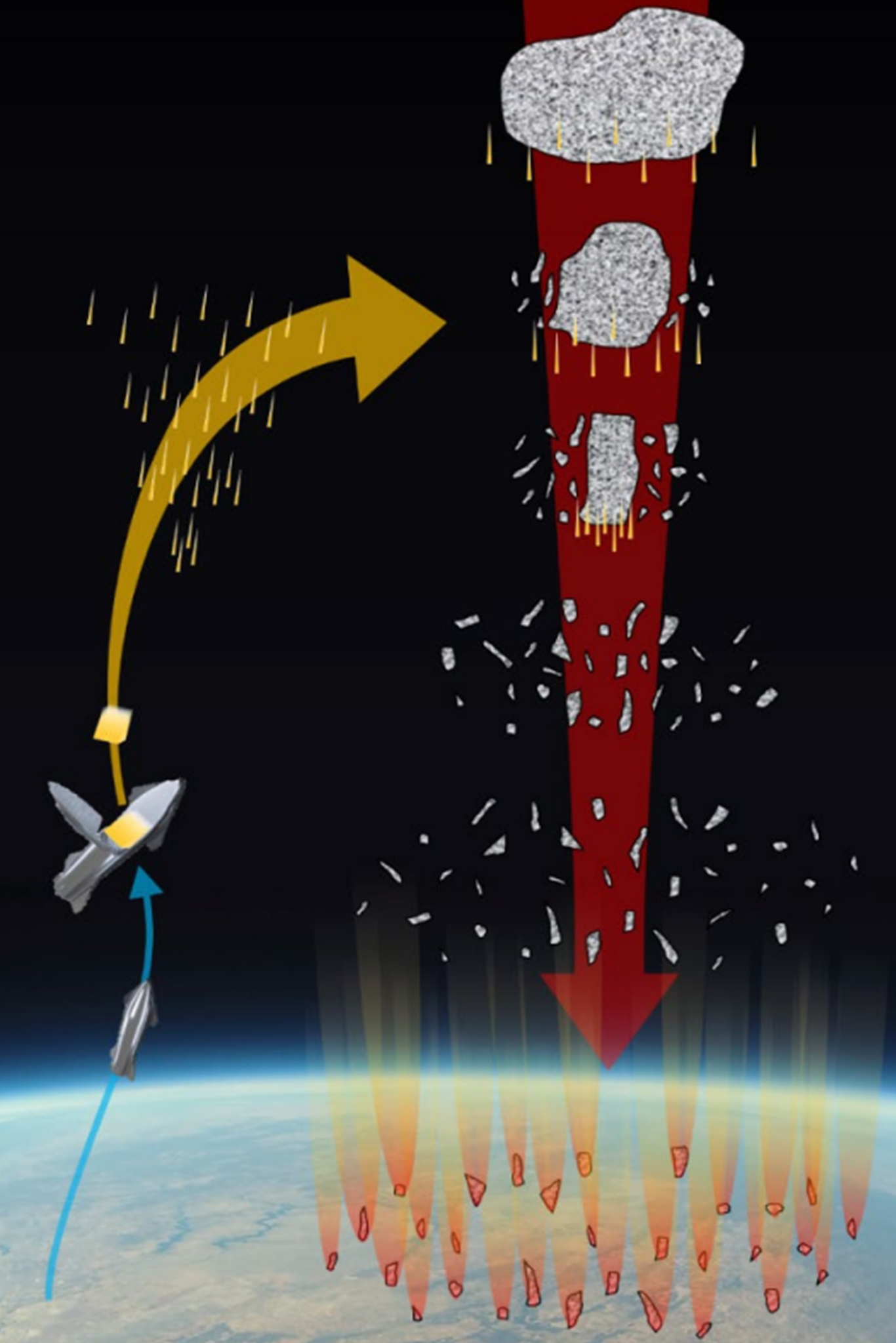Philip Lubin
University of California, Santa Barbara
We present a practical and effective method of planetary defense that allows for extremely short mitigation time scales if required. The method involves an array of small hypervelocity kinetic penetrators that pulverize and disassemble an asteroid or small comet. This effectively mitigates the threat using the Earth’s atmosphere to dissipate the fragment cloud. The proposed system allows a practical, low-cost terminal defense solution to planetary defense using existing technologies. This approach will work in extended time scale interdiction modes where there is a large warning time, as well as in short interdiction time scenarios with intercepts of hours to days before impact. In longer time intercept scenarios, the disassembled asteroid fragments largely miss the Earth. In short intercept scenarios, the asteroid fragments of maximum ~10-meter diameter allow the Earth’s atmosphere to act as a “beam dump” where the fragments either burn up in the atmosphere or air burst, with the primary channel of energy going into spatially and temporally de-correlated shock waves. Compared to other threat reduction scenarios, this approach represents an extremely cost effective, testable, and deployable approach with a logical roadmap of development and testing. Pre-deployment of the system into orbit or a lunar base allows for rapid response on the order of less than a day if needed. The effectiveness of the approach depends on the time to intercept and size of the asteroid, but allows for effective defense against asteroids in the multi-hundred-meter diameter class and could virtually eliminate the threat of mass destruction caused by these threats. The great advantage of this approach is that it allows for terminal defense in the event of short warning times and target distance mitigation where orbital deflection is not feasible. Even intercepts as close as the Moon with intercept times of a few hours prior to impact are viable. Using the Moon as a planetary defense outpost with both detection as well as mitigation (launch) capability is one option to be considered for the future to protect the Earth. The Moon is nearly ideal given the lack of atmosphere allowing for long range optical/NIR LIDAR detection, and the low escape speed allows for rapid launch and interception capability. For an Earth launch-based system, we show that a single heavy lift launcher such as a Falcon Heavy, Starship, SLS etc. can mitigate a multi-hundred-meter diameter asteroid at intercept ranges within a lunar distance if needed. As an example, we show that with only a 1m/s internal disruption, a 5 hours prior to impact intercept of a 50m diameter asteroid (~10Mt yield, similar to Tunguska), a 1 day prior to impact intercept of 100m diameter asteroid (~100Mt yield), or a 10 day prior to impact intercept of Apophis (~370m diam., ~ 4 Gt yield) would largely mitigate these threats. Mitigation of a 1km diameter threat with a 60-day intercept is also viable. We also show that a 20m diameter asteroid (~0.5Mt, similar to Chelyabinsk) can be mitigated with less than a 15-minute prior to impact intercept with a 10m/s disruption. Even a 2-minute prior to impact intercept of 20m class threats is viable. Pro-active mitigation of these threats is also an option. Having such a capability would allow humanity for the first time to take control over its destiny relative to asteroid and comet impacts.































